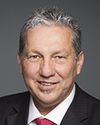Thank you.
In Quebec, at present, there are no official programs for retaining our athletes or our best role models. This is an atrocious oversight. These athletes do it very spontaneously when they see an existing role model, for example, a woman who is a coach or an official.
Most of them become speakers. They also become role models to encourage girls to get moving, but we lose them when it comes to being coaches, officials or administrators on various committees. Something needs to be developed so we do not lose them. We must not simply wait for an existing role model to take them under her wing, even though that does happen. That may answer Mr. Breton's question about coaches in the schools. Often, it is young people who play at the college or early university level who coach girls or boys in the schools. They have not been trained and they have no idea what they are going to do there. Often, they are beginners.
We really have to put a structure in place that is not complex, that will give them good training for their new role, whether as an official, a coach or an administrator.



